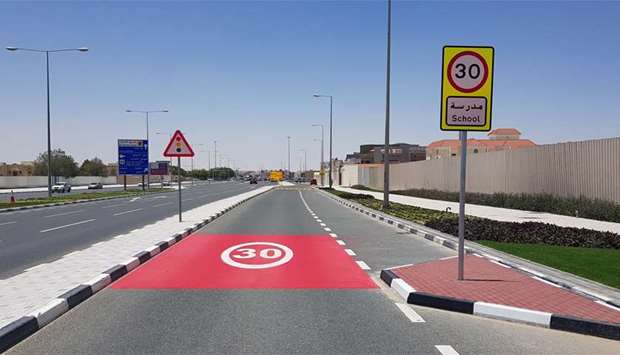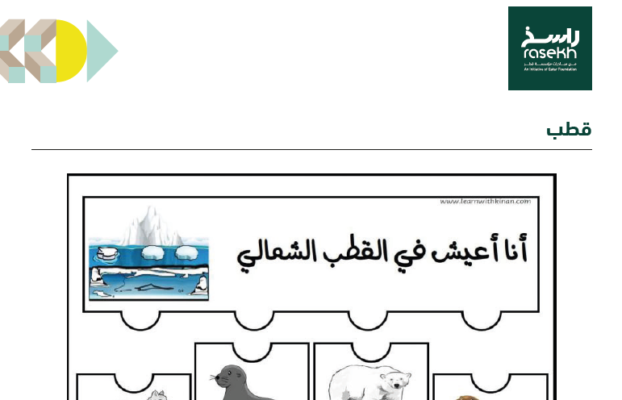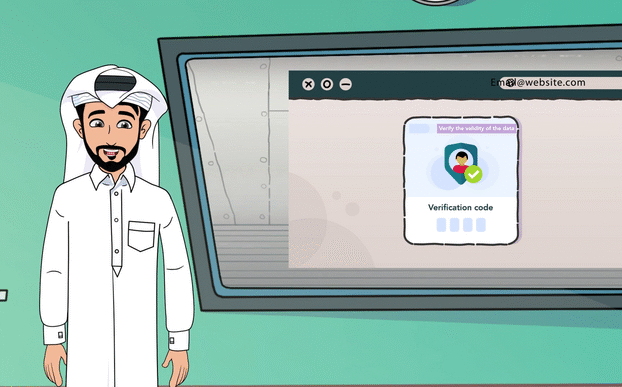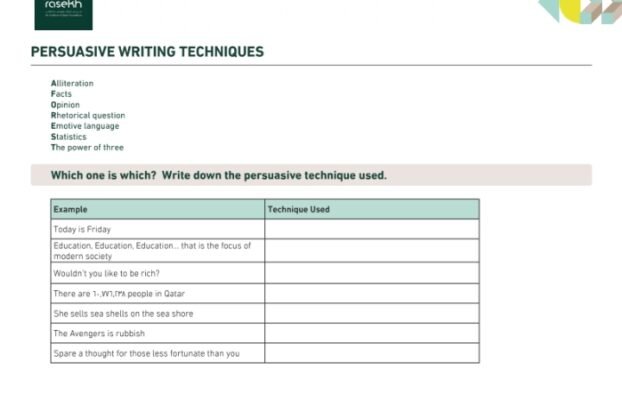Road Safety and Awareness
Keeping Our Roads Safe
-
Sustainability
-
Resource Plan
-
SDG 9: Industry, Innovation and Infrastructure
-
16 - 17 years
-
Language(s), Life Skills, Maths, Physics, Visual Arts
-
Resource ID: 17491
- Share Feedback Embed Resource

Overarching Goal(s)
- To equip learners with the knowledge, skills, motivation and understanding to demonstrate the importance of Glocalization as a sustainable model for learning.
- To inspire students to act sustainably from both local and global perspectives.
Learning Outcomes
- Learners describe, explain, and interpret the characteristics, structures and interactions of a theme, group, project, or organization related to glocalization.
- Learners discuss, plan, and evaluate learner-initiated-action in a sustainable way.
- Learners develop lifelong skills which support their sustainable actions.
- Learners reflect on the impact of their actions and demonstrate their understanding of the action as related to sustainability.
Possible Duration (Hours)
8 hours
Qatar National Vision 2030 Connection
Qatar National Vision 2030:
English: https://www.gco.gov.qa/en/about-qatar/national-vision2030/
Arabic: https://www.gco.gov.qa/ar/about-qatar/national-vision2030/
Source: Government Communications Office (2023). Qatar National Vision 2030. [online] Government Communications Office. Available at: https://www.gco.gov.qa/en/about-qatar/national-vision2030/
English: https://www.psa.gov.qa/en/qnv1/pages/default.aspx
Arabic: https://www.psa.gov.qa/ar/qnv1/Pages/default.aspx
Source: Planning Statistics Authority (2019). Qatar National Vision 2030. [online] Psa.gov.qa. Available at: https://www.psa.gov.qa/en/qnv1/Pages/default.aspx.
Sustainable Development Goals (SDGs) Connection
SDG 9: Industry, Innovation, and Infrastructure: The lesson will have aspects of promoting and raising awareness of resilient infrastructure and sustainable road safety that fosters innovation.
SDG 11: Sustainable Cities and Communities: The lesson tool will make connections to road safety making communities and cities safe, resilient, and sustainable.
The 17 Sustainable Development Goals, United Nations
English: https://sdgs.un.org/goals
Arabic: https://sdgs.un.org/ar/goals
Source: United Nations (2024). The 17 Sustainable Development Goals. [online] United Nations. Available at: https://sdgs.un.org/goals
Action Learning Outcomes
- Learners discuss, evaluate, and plan student-initiated activities.
- Learners become more aware of their own strengths and areas for growth.
- Learners undertake challenges that develop new skills.
- Learners persevere in action.
- Learners consider the ethical implications of their actions.
Content
The content of the lesson tool revolves around identifying and understanding the purpose of road signs and Qatar National Vision 2030. Students will interpret and analyze the National Road Safety Strategy chart on speed and stopping distances. They will design a model city/area to implement solutions and innovative ideas including road safety elements.
Resource Utilization and Identification: Locating the information from The Ashghal official website (see resources below).
Subject Matter: Making connections with global road signs. Exploring directional road signs and their purpose from Ashghal’s video presentation and answering 13 multiple-choice questions to test their comprehension. Analyzing road safety targets from the National Road Safety Strategy document and using this information to choose and select an action plan target area that they wish to raise awareness to inform others. Interpreting and analyzing braking, reaction and stopping distances at various speeds, and constructing a bar graph for stopping distances on dry and wet road conditions.
Glocalization Connections: Road safety and signs are a necessity locally and globally.
Differentiation: Choice of road safety target and form of presentation.
Critical Thinking: Encourage students to critically analyze and interpret the safety significance of their chosen road safety target, considering its potential local and global influence.
Strategies
The strategies employed in this lesson tool are designed to foster analyzing, critical thinking, inquiry, collaboration, and innovative engagement. They include visible thinking routines, responsive pedagogy, and problem-solving approaches to adapt to students’ needs and encourage active participation. Students apply meaningful learning experiences that connect to local infrastructure.
Responsive and Adaptive Pedagogy: Adjust the pace and level of guidance based on student responses and engagement, considering the diversity of road safety elements. Be culturally sensitive to road safety related issues.
Visible Thinking Routines: Implement the “Think-pair-share” routine to stimulate critical thinking and discussion. Encourage students to utilize what they already know, and what they want to find out more about; to extend their knowledge to learn new information.
Inquiry: Encourage students to inquire about the road safety and significance of their fostering a sense of curiosity and exploration
Collaboration: Facilitate a class discussion forum where students can share and compare their findings, promoting collaboration and the exchange of diverse perspectives.
Assessment for and as Learning: Use formative assessments like peer reviews/reflections of their road safety model city/area and encourage discussions to enhance critical thinking and analysis on why certain safety elements are included.
Problem-Solving: Ask students to identify and propose solutions to challenges related to road safety and what actions/solutions could be recommended.
Learning Experiences
Learning Engagement 1: Road directional signs and Qatar National vision
Resources: Ashghal website: https://www.ashghal.gov.qa/en/MediaHub/Pages/VideoGallery.aspx?album=17
Educational video about the Directional Signs: https://youtu.be/Xg-B2YN-xTQ
Resource 1: Ashghal video multiple-choice questions: https://rasekh.qa/wp-content/uploads/2024/04/Resource-1_-Ashghal-video-multiple-choice-questions.pdf
Learning Objective: Understanding road signs and their purpose
Activity Description: The teacher will show the educational video on directional signs from Ashghal: https://youtu.be/Xg-B2YN-xTQ
This can be shown as a whole class activity or have students watching on their iPads using headphones.
After watching the video, the teacher will hand out the multiple-choice questionnaire resource 1: https://rasekh.qa/wp-content/uploads/2024/04/Resource-1_-Ashghal-video-multiple-choice-questions.pdf
Once completed, the teacher will display the answers for students to work with peers to discuss their responses and reflect on their answers and add any beneficial comments using another colored pen. The teacher can use these as an assessment tool to check for understanding.
The teacher will then ask students to look at the Qatar National Vision 2030 document: https://www.psa.gov.qa/en/qnv1/pages/default.aspx and locate under which pillar would these road signs be essential for Qatar’s Vision and sustainability of the country?
Student friendly questions:
Why do you think it is important to have road directional signs?
Are these road signs required legally? Explain your answer.
Which other countries have you been to and seen similar road signs?
Are they written in different languages? Explain why is this?
Why and how is the Qatar National Vision 2030 pillar to sustain roads and safety on the roads important for the nation?
What is the significance of developing and sustaining roads and safety on roads in Qatar?
Reflection journal:
Students can use journals as a reflection tool. Students can feel free to document their thoughts in their reflection journal. This provides a documented record of their ideas that they can re-visit as needed.
Learning Engagement 2: Interpret and analyze braking, reaction and stopping distances at various speeds.
Resources
Resource 2: Interpreting and analyzing braking, reaction and stopping distances at various speeds –
Simulation in English: https://rasekh.qa/en/resource/braking-distance/
Simulation in Arabic: https://rasekh.qa/ar/resource/braking-distance/
(Simulation inspired from the: National Road Safety Strategy Document, p. 37.
https://www.ashghal.gov.qa/ServicesLibrary/English/NRSS_Eng.pdf#search=road%20safety).
Part 1:
Learning Objective: To interpret and analyze braking, reaction and stopping distances at various speeds
- Students will be provided with Resource 2: Interpreting and analyzing braking, reaction and stopping distances at various speeds: https://rasekh.qa/wp-content/uploads/2024/04/Resource-2_-Braking-reaction-and-stopping-distances-at-various-speeds-.pdf
Part 2: Visible Thinking Routine – “Think-Pair-Share”
Instructions for Teachers: Explain to students that they will use the “Think-Pair-Share” routine to discuss responses from the simulation, and solutions to reduce speeds as their role as a ‘Speeding Control Officer’. Encourage them to think individually, share their thoughts with a partner, and then participate in a class discussion. Emphasize that this is a collaborative and reflective process.
Instructions for Students:
Think: Ask students to individually think about anything that surprised them. Do they feel that safer speeds are more controlled? What could be some additional sustainable solutions to maintain our roads to be safe?
Pair: Have students pair up with another student. Encourage them to share their thoughts about addressing solutions. Students are encouraged to take turns in speaking and listening to each other.
Share: As a class, open discussion. Ask students to share what they and their partner discussed. Encourage them to express their thoughts, questions, and ideas.
Student-Friendly Questions:
- What do you notice that helps reduce speeds locally or globally?
- How can we raise awareness to sustain safer roads?
- How can we add value to Qatar’s infrastructure in maintaining safer speeds?
- What responsibilities do you have as a passenger in a car?
- What responsibilities do you have to use the road safely?
- What responsibilities do car drivers have?
- How can we ensure measures are in place to raise awareness that everyone has a shared responsibility towards road safety?
- Why do we need precautionary measures in place?
- What is the purpose of speed cameras?
- Have you noticed speed humps used on roads? What is the purpose of this? Do you think they help?
- Would you agree that we have a shared responsibility towards road safety? Explain why.
Reflection from think-pair-share responses
Reflection Journal
Students can use journals as a reflection tool. Students can feel free to document their thoughts and their peer’s thoughts in their reflection journal. This provides a documented record of their ideas that they can re-visit as needed.
Learning Engagement 3: Designing a model area/city to promote road safety.
Resources: National Road Safety Strategy Document: https://www.ashghal.gov.qa/ServicesLibrary/English/NRSS_Eng.pdf#search=road%20safety)
National Road Safety Strategy Brochure
Instructions for teachers: Students will choose an area or city they wish to focus on and link to the SDG goal, Qatar National Vision pillar and National Road Safety action targets. They can work in pairs or individually. Provide them with the resources and tools and time to look through the National Road Safety Strategy brochures to decide which area they wish to create their model city/area consisting of road safety elements. They will design an area/city model consisting of road signs, safety objects, and can be creative and innovative as they wish to come up with well-designed models of ideas for safer cities/roads.
Instructions for students: Your task as a Junior Road Safety Strategy Officer, you will choose an area/city in Qatar of interest that you want to develop road safety ideas. You can take photos to add to your reflection journal or optional presentation board to demonstrate the changes before and after your innovative ideas. You will create a model that you will present to senior leaders in your school of your ‘safe, sustainable city/area.’ You may want to make a video to explain your model or notes for presentation. Remember to include some national directional road signs, and your ideas how it makes your area or city safe. For example, a car driving with everyone having seatbelts on, safe distances between cars and people – showing the safe stopping distances at a reasonable speed, speed cameras alerting when driving too fast, slow down alerts, warning alerts on roads to keep distance or in lane. These are just some suggestions, and your models will be designed to impress!
Differentiation: They would be encouraged to have both languages Arabic and English to involve a wider audience and to be creative to draw attention for positive, sustainable action.
Presentation Evaluation: After the presentation, assess students’ insights into the importance of raising awareness about road safety and check against rubric (resource 3 – https://rasekh.qa/wp-content/uploads/2024/04/Resource-3_-Rubric-for-Road-Safety-Model-City_Area.pdf)
Checking for Understanding
Learning Engagement 1: Road directional signs and Qatar National vision
Learning Objective: Understanding road signs and their purpose
Multiple choice (13 questions) peer assessment to check for understanding.
Learning Engagement 2: Interpret and analyze braking, reaction and stopping distances at various speeds.
Resource 2: Interpreting and analyzing stopping, reaction and braking distances at various speeds.
Simulation in English: https://rasekh.qa/en/resource/braking-distance/
Simulation in Arabic: https://rasekh.qa/ar/resource/braking-distance/
Part 1:
Learning Objective: To interpret and analyze braking, reaction and stopping distances at various speeds.
Responses from the simulation.
Part 2: Visible Thinking Routine – “Think-Pair-Share”
Feedback on students’ responses on think-pair-share activity in accordance with their responses from the simulation and solutions.
Learning Engagement 3: Designing a model area/city to promote road safety.
Resource 3: Road Safety Model City/Area Rubric – teachers and students can use rubric to assess and evaluate understanding. Students can be celebrated for being certified Junior Road Safety Officers and others congratulated on their efforts.
Differentiation
Choice of presentation and road safety sustainable solutions and elements included.
Presentation Evaluation: After the presentation assess students’ insights into the importance of raising awareness about road safety and with resource 3 rubric.
Key Vocabulary
awareness, communities, distance, infrastructure, measures, national, passengers, precautions, responsibility, roads, road user, safety, speed, strategy, sustainability
Resources
Ashghal official page for the media hub:
English language site:
https://www.ashghal.gov.qa/en/MediaHub/Pages/VideoAlbum.aspx
Arabic language site:
https://www.ashghal.gov.qa/ar/MediaHub/pages/default.aspx
Educational video resource on directional road signs: : https://youtu.be/Xg-B2YN-xTQ
National Road Safety Strategy:
https://www.ashghal.gov.qa/ServicesLibrary/English/NRSS_Eng.pdf#search=road%20safety
National Road Safety Strategy Brochures
Resource 1: Ashghal Video Multiple-choice questions: https://rasekh.qa/wp-content/uploads/2024/04/Resource-1_-Ashghal-video-multiple-choice-questions.pdf
Resource 2: Interpreting and analyzing braking, reaction and stopping distances at various speeds: https://rasekh.qa/wp-content/uploads/2024/04/Resource-2_-Braking-reaction-and-stopping-distances-at-various-speeds-.pdf
Resource 3: Rubric for Road Safety Model City/Area – https://rasekh.qa/wp-content/uploads/2024/04/Resource-3_-Rubric-for-Road-Safety-Model-City_Area.pdf
Interactive Simulation:
In English: https://rasekh.qa/en/resource/braking-distance/
In Arabic: https://rasekh.qa/ar/resource/braking-distance/
(Simulation inspired from the: National Road Safety Strategy Document, p. 37).
https://www.ashghal.gov.qa/ServicesLibrary/English/NRSS_Eng.pdf#search=road%20safety
Resource Publisher
Ashghal Public Works Authority
The Public Works Authority 'Ashghal' was established in 2004 to be responsible for the planning, design, procurement, construction, delivery, and asset management of all infrastructure projects and public buildings in Qatar.










